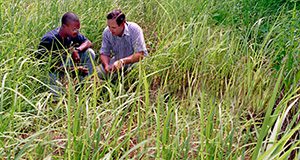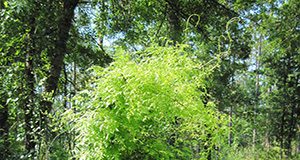Cogongrass (Imperata cylindrica (L.) Beauv.) is a Southeast Asian warm-season perennial grass species that has spread to all continents except Antarctica. It is considered among the worst problematic weeds on a global scale. Control of cogongrass is difficult, especially in forests. This 6-page fact sheet written by Patrick J. Minogue, Brent V. Brodbeck, and James H. Miller and published by the UF/IFAS School of Forest Resources and Conservation presents recommendations for control strategies that will work in mixed pine-hardwood forests and pine forests.
http://edis.ifas.ufl.edu/fr411
Tag: Patrick J. Minogue
Control y Biologia del Helecho Trepador Japones (Lygodium japonicum )
El helecho trepador japonés es una enredadera invasiva no nativa de los Estados Unidos (EEUU) que fue introducida aproximadamente en 1900. Este helecho se ha establecido a lo largo de la llanura costera del sudeste de los EEUU desde los estados de Norte y Sur Carolinas hasta Texas y Arkansas. El helecho trepador japonés es nativo de Asia, en particular Japón así como al oeste de la cordillera de los Himalayas. El área de establecimiento se ha expandido desde la región de la costa del Golfo de México incluyendo TX, AR, LA, MS, AL, FL, GA, SC, NC, y PA. En Florida, el helecho trepador japonés está ampliamente distribuido en el norte y al oeste del estado, mientras que en la parte centro-sur su abundancia es variable. Este helecho está adaptado a lugares soleados o con sombra, y por lo general se localiza en suelos húmedos como los bordes de los pantanos, lagos, arroyos y bosques de tierras altas.
This 6-page fact sheet was written by Elsa D. Chevasco, Patrick J. Minogue, Kimberly K. Bohn, and Francisco Escobedo, and published by the UF Department of School of Forest Resources and Conservation, November 2016.
http://edis.ifas.ufl.edu/fr344
Guide to Fertilization for Pine Straw Production on Coastal Plain Sites

Pine straw has gained popularity as a mulch for residential and commercial landscaping in urban and suburban areas. It is attractive, relatively low-cost, and easy to work with. Best of all, it performs well in all kinds of locations–including those difficult-to-mulch slopes! Pine straw is perfect for water-efficient landscaping (xeriscaping), an increasingly popular choice for environmentally conscious landscapers. Thanks to the growing popularity of this natural mulch material, pine straw production has quickly become an important Florida industry. Regularly removing pine straw from pine stands is not without consequences, however; the loss of the cover and nutrients pine straw provides can reduce the productivity of the pine forest. Proper fertilization and harvest techniques are crucial to maintain the viability of the new industry and traditional pine industries alike. This 12-page guide written by Anna Osiecka, Patrick J. Minogue, and E. David Dickens and published by the School of Forest Resources and Conservation explains how to fertilize wisely to offset the effects of pine straw removal and maintain the viability of pine plantations.
http://edis.ifas.ufl.edu/fr395

